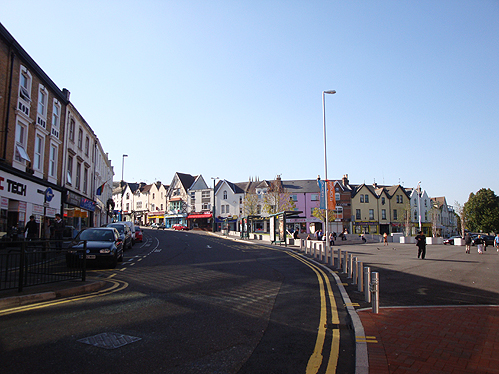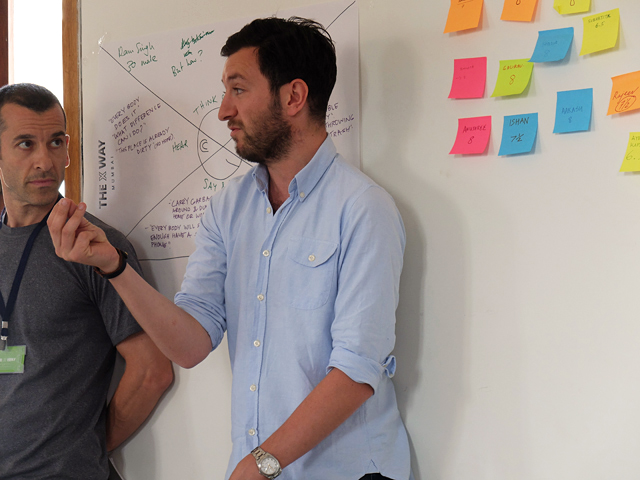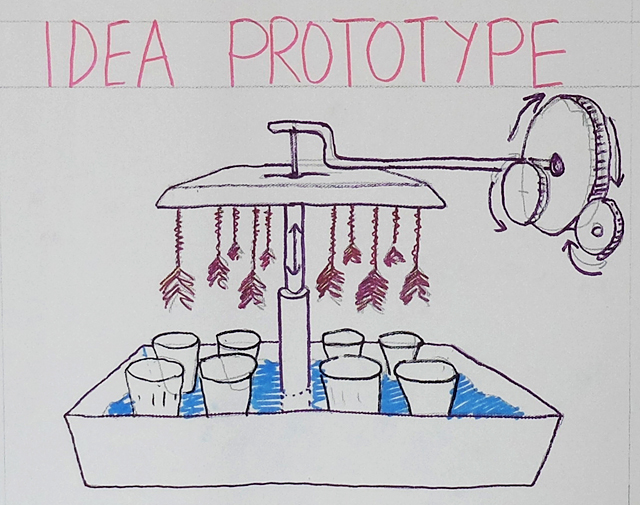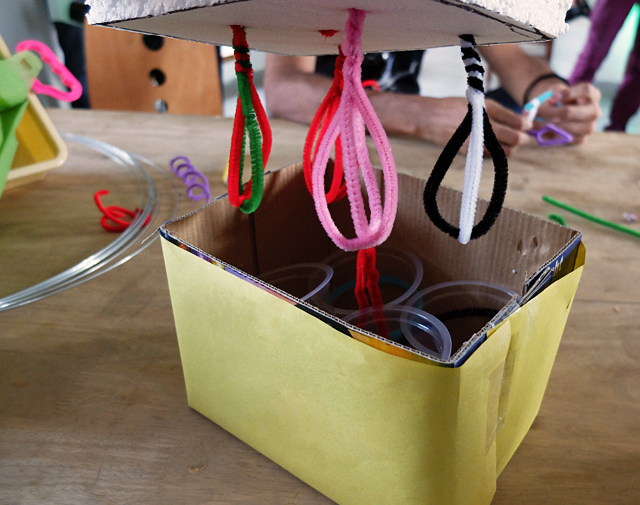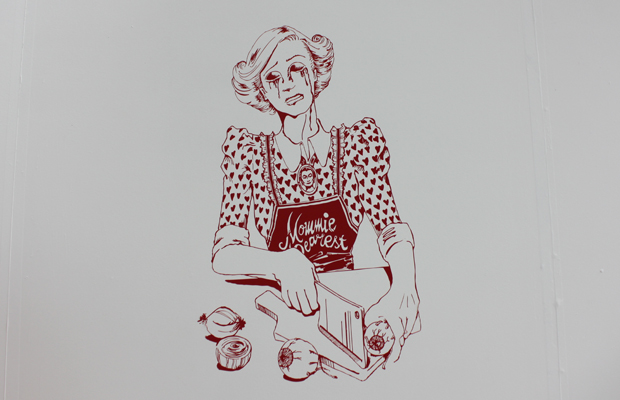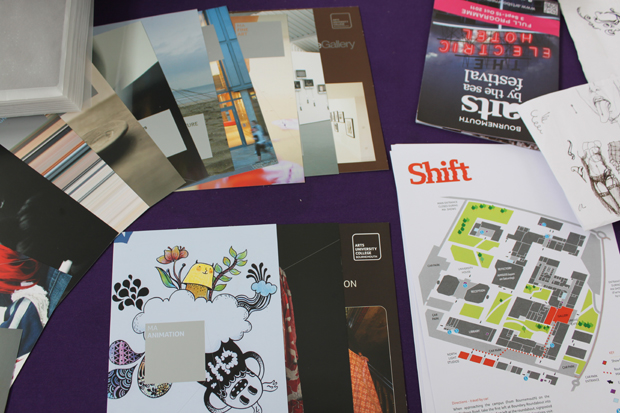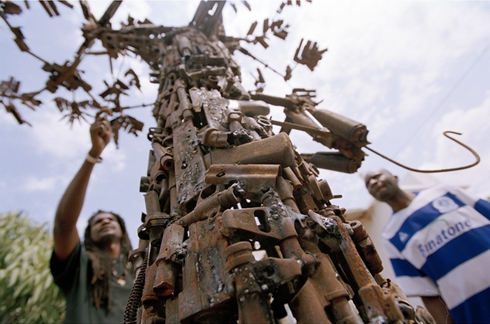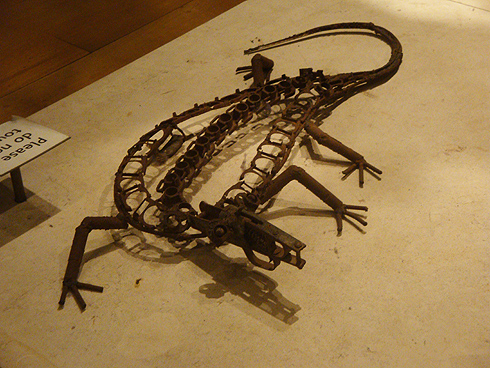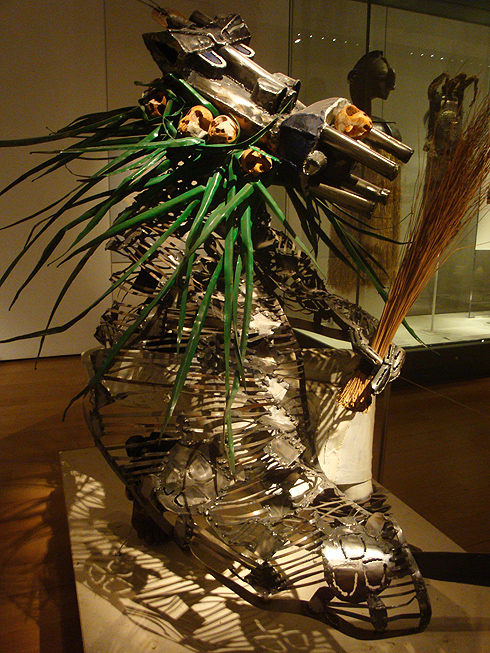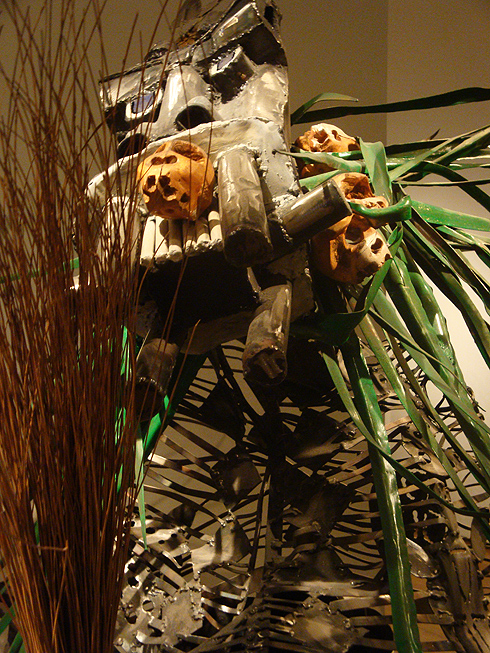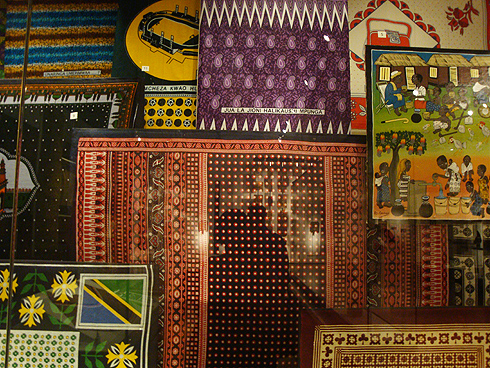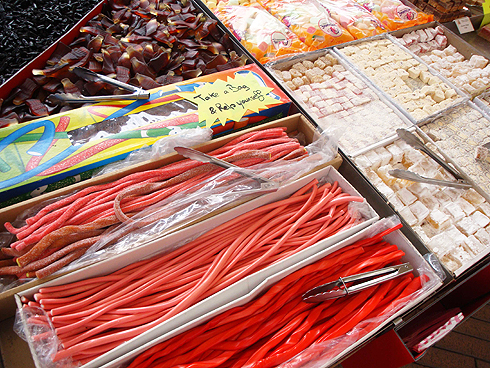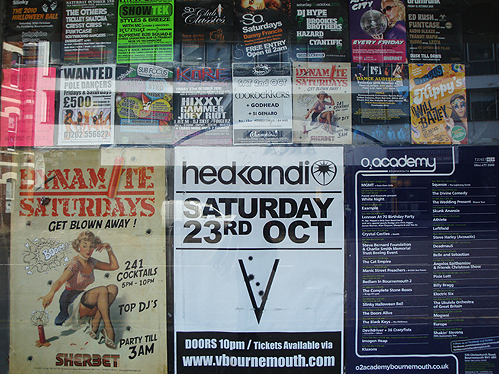Creating the Jugaad Dishwasher, The X-Way
The X-Way was a 2 day workshop sponsored by Nokia and Microsoft that focused on ideas, strategies and discussion around improving Mumbai city. Ben & Andrew moderated the workshop, keeping it challenging as twenty creatives and innovators came together with many, many city ideas.
The X-Way was a 2 day workshop sponsored by Nokia and Microsoft that focused on ideas, strategies and discussion around improving Mumbai city. Ben & Andrew moderated the workshop, keeping it challenging as twenty creatives and innovators came together with many, many city ideas.
One of the interesting exercises was listing things we love and hate about Mumbai. It was heartening to see that the 'love' pile was so much bigger despite Mumbai's numerous faults.
When discussing Mumbai's numerous problems, traffic cannot be ignored. Everything to do with traffic and way-finding is contextual. Signage is missing in a lot of places. When pedestrians give directions, the meaning may be different depending on the tone of their voice, how they stand, hand gestures and language. Honking has varied meanings depending on frequency, tones, loudness and the length of each honk. The city is a hotbed of large scale issues and topics of interest.
My team eventually looked at pavement ownership as a microcosm of health and sanitation. How could we encourage and create value in a public space such as pavement. We were in posh areas of Mumbai, and even here we found street hawkers taking ownership of pavements (in a good way) keeping them clean and ensuring their part of the pavement was maintained. Eventually we focussed even further and came up to a sugarcane vendor. Could we come up with something to help him wash the glasses in his stall while he was busy doing a million other things like making the juice, serving and cashing. A lot of times hygiene and proper washing was way down in his priorities while multi-tasking.
The final concept after two days of guerrilla research and quick prototyping was the 'jugaad dishwasher' - a mechanically automated machine that washed glasses saving the vendor time and effort as he ran a one-man operation. The washer connects to the juice machine itself so it doesn't need electricity to run. Soap is optional here since most vendors do not use soap. Overall the 'jugaad dishwasher' concept could also work for other street hawkers, juice vendors and with a few upgrades could even save time in someone's kitchen.
Check out some photos of the prototype we made. The video below has a few shots of us talking to sugarcane vendors.
The rotating juicer translates into the up and down movement of the simple washer, which repeatedly rinses the glasses. The trough can be easily refilled and cleaned and occupies minimal space.
Neon Workshop
The neon workshop was a one-day crash course on making neon lights. Detailed demonstrations on how to bend glass tubes, suck out all the air and then fill the tube with either neon, argon or helium took up the first half of the day. The second half was spent exploring the material, after which we were given free reign on the propane blowtorches!! :)
Cutting a glass tube
Glass tubes are bent after careful heating in the right angles, using gravity. Results like this only come after lots of practice.
The ribbon burner has a long flame that softens a large part of the tube evenly.
Joining two glass tubes using a precise burner was extremely difficult. I totally failed at my attempt, I ended up blowing a glass bubble instead because of too much air, and then the bubble burst. A tube with a hole can never be used for neon.
Part of the giant machine that creates a vaccum in the tubes before filling it with the required gases.
Neon master Julia Bickerstaff and British artist Richard Wheater encouraged us to question the limits of the material and explore its potential in relation to our individual art practice. That was the best part, being introduced to a completely new medium and told to freak out with it on the same day. Also worth mentioning was how to transcribe an idea into a drawing for neon-making.
The video below is my work (made by Julia of course) which we filled with helium. I love the colour of helium, its a natural pink hue that went well with the concept, which is the number sixty-nine in Devanagari letterforms. Due to a few impurities added in the tube flickers continuously, an effect that I really really wanted to try out. Another way to do this would be to programme it to flicker. However this is purely physical and does not need any external controls.
The best work was displayed later at the Light Night festival in Bournemouth town center and the Neon: Shaping Light exhibition at the text+work gallery.
Shift Exhibition
Have a look at our post-graduate show Shift. This friday (9th September) is the last day so don't miss it if you're in or around Bournemouth :)
Artist Yi Lu with her paper mache world
Subconscious Form by Shiro Araki
Urban Brick by Bana Toutounjee
by Taro Morimoto
Mumbai/Bombay by Aditi Kulkarni
New Blindness by Rocco Nahas
A stretchable movie by Richard Hurst.
Be-Bee Project by Kaya J. Lee
The Ophelia Project by Samantha Else.
Museum Visit
A trip to London ended up at the British museum. Most of the work I found inspiring were from the Africa rooms:
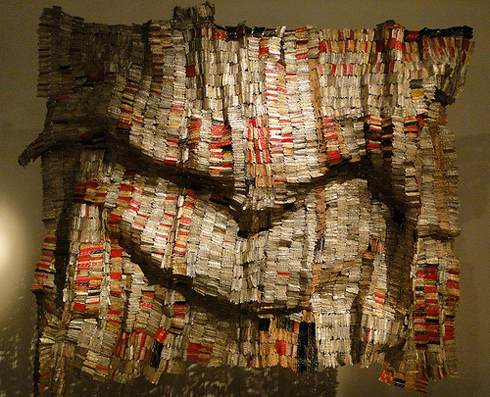
Man's Cloth. Recycled metal foil bottle-neck wrappers, copper wire. By El Anatsui, Ghana, 1998-2001. Image 1 Source. Detail photograph taken at the British Museum April 2011.
Throne of weapons, by Kester, Maputo, Mozambique, 2001. Made of decommissioned weapons from the Mozambican civil war in 1992. Exhibited at Room 25 Africa at the British Museum (April 2011).
Tree of Life Made by Kester, Hilario Nhatugueja, Fiel dos Santos and Adelino Serafim Maté. Maputo, Mozambique, 2004. Photo © 2005 Christian Aid / David Rose.
Part of the sculpture Tree of Life Made by Kester, Hilario Nhatugueja, Fiel dos Santos and Adelino Serafim Maté. Maputo, Mozambique, 2004. Photo by Aditi Kulkarni at the British Museum Room 25: Africa.
Otobo (Hippo) masquerade, made by Sokari Douglas Camp, 1995. Steel, paint, wood and palm stem brooms. British Museum April 2011. More details.
Glazed stoneware figure of a judgement group, Ming Dynasty, China, 16th century. Photo taken at British Museum, Asian Gallery.
Housepost, Iatmul people, Sepik River, Papua New guinea, 1900-1950.
Kanga display, Africa room, British Museum, April 2011.
Bournemouth
My first few glimpses of the streets nearby. Suddenly the importance of weather forecasts has trebled, because it could mean the difference between freezing and sort of bearable (for me). In Bombay there's no need to check the weather because the temperature varies between 25-36 degree C throughout year, and during the monsoons it rains everyday.
